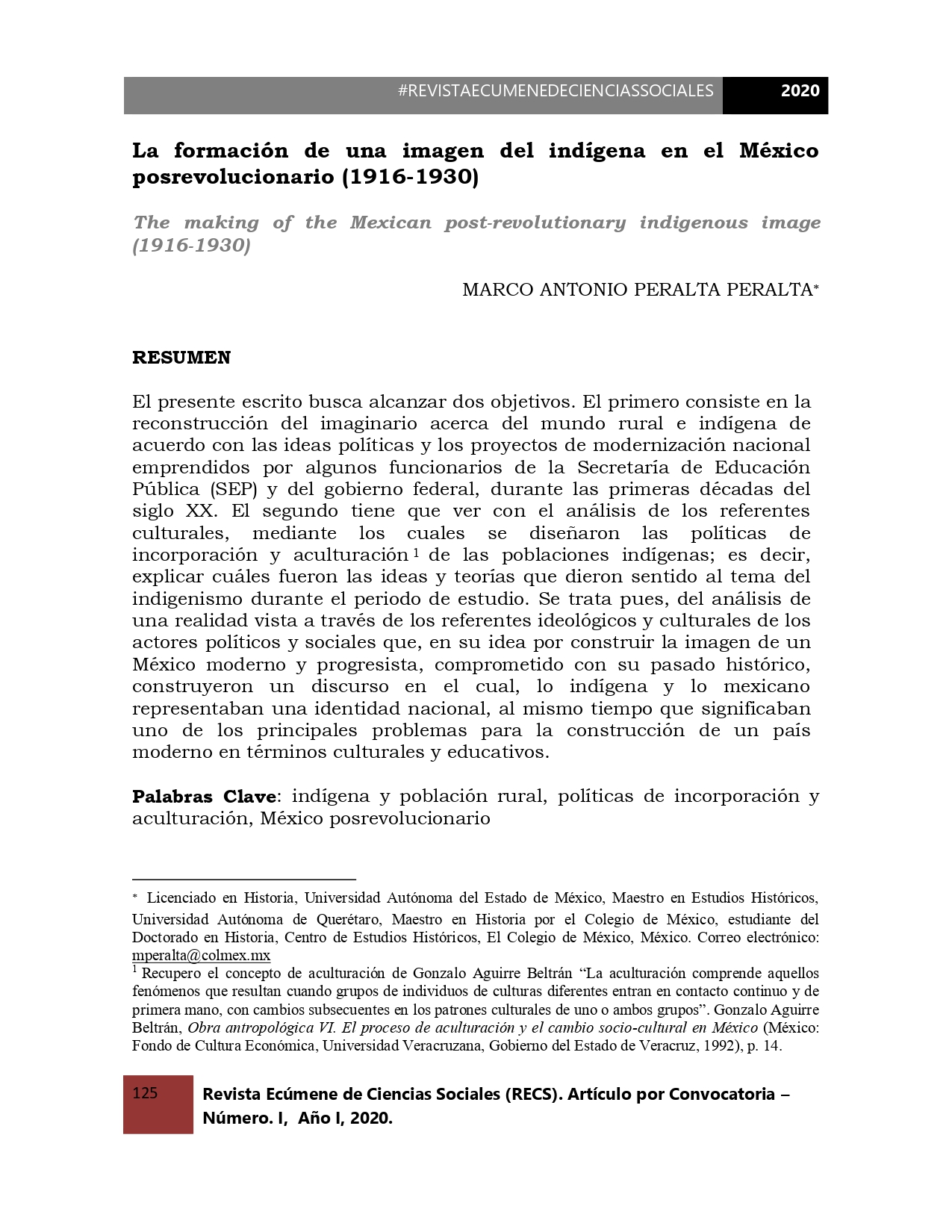Abstract
This writing seeks to achieve two objectives. The first consists of the reconstruction of the imaginary about the rural and indigenous world in accordance with the political ideas and national modernization projects undertaken by some officials of the Ministry of Public Education (SEP) and the federal government, during the first three decades of twentieth century. The second is the analysis of cultural references, through which the incorporation and acculturation policies of indigenous populations were designed; therefore, to explain what the ideas and theories that gave meaning to the subject of indigenist were during the study period. It is an analysis of a reality seen through the ideological and cultural references of the political and social actors, in their idea to build the image of a modern and progressive Mexico, committed to its historical past, by making a discourse in which the indigenous and the Mexican represented a national identity, and at the same time that they represented one of the main problems for the construction of a modern country in cultural and educational terms.

This work is licensed under a Creative Commons Attribution-NonCommercial-ShareAlike 4.0 International License.

